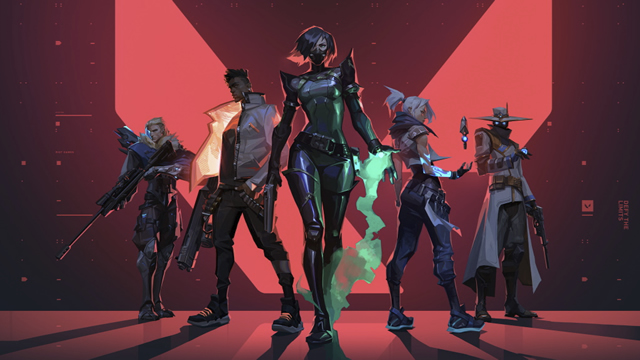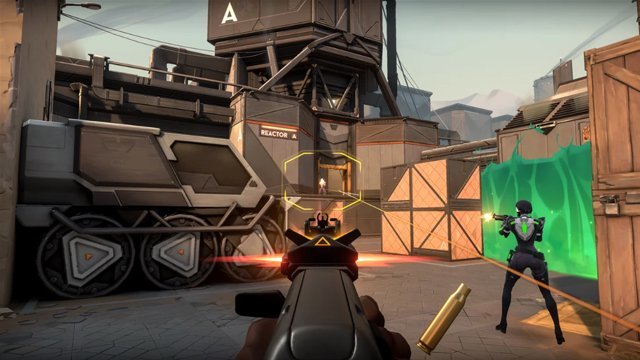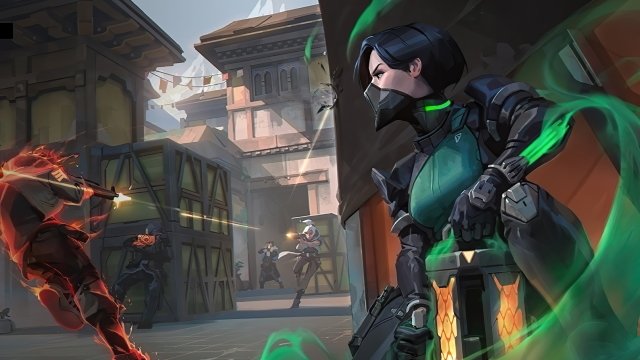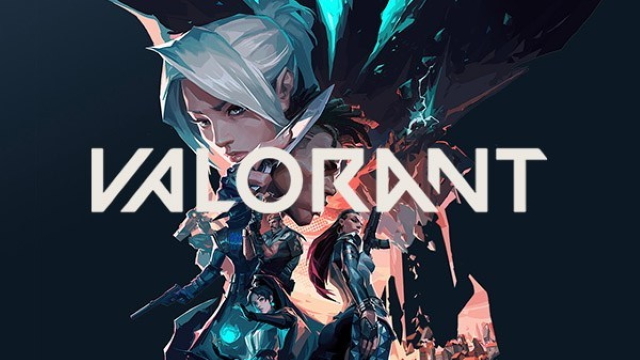Valorant can be an unforgiving game for newcomers. It’s designed with strategic gameplay in mind, meaning victory requires both quick reflexes and thoughtful strategies. If you’re wondering how to get better at Valorant, this guide will provide five basic tips you need in order to think and act more competitively.
How to get better at Valorant

As with any competitive shooter, the best way to improve your Valorant game is to get plenty of practice. However, you won’t get better at Valorant through practice alone: You also need learn everything you can about the game’s core fundamental mechanics. Training and familiarizing yourself with each Agent is a good first step, while advanced players will need to learn maps, recoil patterns, and how to play eco.
Here are five different steps you should take to get better at Valorant and start earning more match wins.
Step 1: Train through the Practice Mode
This step is first because it’s the most obvious. Practice has a number of different benefits, from simply learning how the game feels to figuring out which strategies work best for you. The Valorant Practice Mode is also a great way to familiarize yourself with basic controls or as a way to warm up before jumping into ranked competitive matchmaking. As always, the traditional rule still applies: Practice makes perfect.
Step 2: Get to know each Agent
There are 11 different Agents in Valorant, and each of them have unique strengths, weaknesses, and abilities. And while each Agent can be strong in the right hands, not all of them are a smart choice for starting players. If you’re still in the early stages of the game, check out our guide to learn which Agent you should unlock first.

Chances are good that you’ll eventually find an Agent that best suits your individual play style. Most players will likely gravitate to Sage or Cypher, as they’re often considered the best characters in the game. However, we recommend playing with all of them at some point or another. Not only will it help you get more comfortable with how each Agent controls, knowing their abilities will better help you understand enemy strategies.
Step 3: Study maps and learn map callouts
Each of the maps in Valorant are designed to offer a variety of strategic opportunities. Yes, you’ll need to know where to plant spikes, but you also need to know where to seek cover or where enemies are likely to group. Smart teams will know which choke points to use, the quickest way to rotate to bomb sites, or which location to hold in order to stop enemy offensives.

It’s also worth brushing up on Valorant map callouts. You should learn most of these through time, but it won’t hurt to ask your teammates for clarification if you get confused. Every map has an A site or B site, while Haven has a third C site. There are also a few standard callouts like long, short, mid, and spawn. The more familiar you are with these locations, the more quickly you can respond to your team’s voice communications. You can find a quick overview of the most common callouts with this post from user iDakatsu over on the Valorant subreddit.
Step 4: Learn weapon recoil patterns
Every weapon in Valorant handles differently, and a big part of making accurate shots involves understanding recoil. This is especially true for automatic fire weapons, as their accuracy drops dramatically when spraying.
It isn’t always wise to use full-auto fire. Most weapons respond better to one-tap firing or short bursts. However, there will eventually come a time when all that’s left to do is hold down the trigger and hope for the best — the old spray ‘n’ pray. In these instances, you’d be wise to know your weapon’s recoil patterns.
Fortunately, recoil patterns aren’t very hard to figure out. Without moving your mouse, empty your weapon’s clip into a wall and note the spread of bullet holes. Nearly all weapons will trend upward under fire, which means you need to draw your crosshair downward to compensate. Many will also veer left or right, meaning you’ll need to pull your crosshair right or left to make up for the difference.
Generally speaking, you can minimize recoil with most weapons by pulling down and to the right after the first few shots. If you’re looking for more specific examples, YouTube user Qwixzo has an excellent video demonstrating the spray patterns of each Valorant weapon. Check it out in the embed featured above.
Step 5: Make the most of the in-game economy
Smart Valorant players need to know how to manage the economy. You’re likely already aware that you need to purchase your weapons, but what you may not realize is that spending your money is not always the best choice.
For example: If you have plenty of money but your teammates are broke, it’s unwise to buy expensive weapons like Odin or Operator. This is because without proper backup, you’re far more likely to die before making up the money you just spent. When that happens, you’ll have less money in the following round, and will then be less capable of defending your teammates, who just spent the money they’d saved up the round prior.

You also need to consider the opposing team’s economy. If the enemy team does a full buy (where every player purchases a weapon and shields) and then loses the round, they’ll probably have to either save their cash or force buy the next round. If they choose to save, it gives your team an opportunity to score an easy round win and earn even more cash. However, if they force buy and lose again, they won’t have the cash needed to buy the following round.
In short, playing eco involves more than just buying the best weapon you can afford. You need to make sure your team has the funds needed to be well-equipped for any situation. Likewise, you need to pay attention to enemy loadouts and apply extra pressure when you know your opponents are running out of money.











